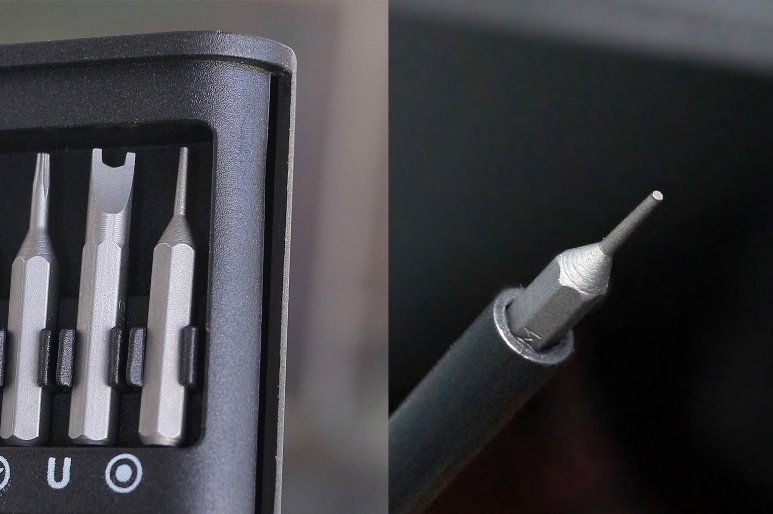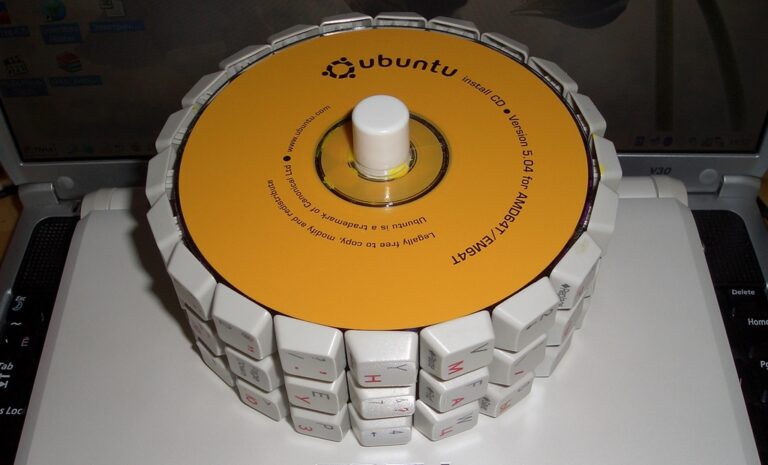What is a round slot bit used for?

Some time ago I ordered a screwdriver with a set of bits. When I received my order, I was surprised to find that the set included a bit with a round slot. The slot is completely round. It will be difficult to unscrew or tighten anything with such a bat. It seems that from a practical point of view the bat is useless and is only suitable for some kind of practical joke. But a bit with such a slot has a very specific application.
I had never encountered such bits before and therefore began to look for information about what such bits were needed for. It is worth noting that my set is a Chinese copy or even a Chinese copy of a Chinese copy of a famous manufacturer's set. There is no normal description of my set either on the box or on the pages of marketplaces; I couldn’t find the manufacturer’s website. So I started looking at the description of the original set and found out that there were no round slotted bits in the original set. Apparently, this artifact appeared during the copying process. Straightforward queries like “What is a round slot bit for?” in two languages and in several search engines, as well as browsing through catalogs of various manufacturers did not yield any results.
I was lucky that my bat was marked: S2 SIM.

S2 present on all bits and denotes material – Shock Resistant Steel (tool steel).
Designation SIM unlike the designations of other splines (SLx, PHx, Tx…) was not found in the catalogs, but it suggested that this bit is not really a bit, but a device for extracting SIM cards in the form of a bit. Below, for brevity, I will call it an extractor. This idea seemed strange to me. However, I quickly found confirmation: the round slot bits are sold separately and are clearly positioned by the seller as a tool for removing SIM cards.

Why make a SIM card extractor in the format of a screwdriver bit?
The extractor in the form of a bit is fixed in the case along with the rest of the bits. Thanks to this, it has its own place, it is always together with other tools and so it is much more difficult to lose it.
Perhaps, if the SIM card tray comes out tightly, then using a tool with a handle in the form of a full-fledged screwdriver will be more convenient than a regular miniature pusher.
But this form factor also has its drawbacks.
Geometric compatibility problem
There appears to be no standard that describes the geometry of SIM card ejection mechanisms. Therefore, device manufacturers choose the sizes themselves. As a result, the compatibility of extractors is not guaranteed. The SIM card extractor has two main geometric parameters – diameter and length.
Extractor diameter

Despite the lack of a standard, most SIM card ejection mechanisms are standardized based on the diameter of the extractor. Equipment manufacturers are trying to make it possible to use a paper clip as an extractor.
According to GOST 38-87: “For type 1 staples, the wire diameter is 0.8 – 1.0 mm.” Foreign paper clips, I think, are made of wire of a similar diameter. All the “classic” extractors that I managed to find at home meet the GOST diameter requirements.
The diameter of the working part of my extractor bit, according to the table on the box, should be 1.0 mm. But in reality, the pushing part of the bit has a noticeable taper: the diameter varies from 0.8 mm at the end to 1.1 mm closer to the base. As a result, it is impossible to insert the bit completely into the hole in my Samsung phone.
But this is a feature of the manufacturing process of a specific cheap sample. Screwdriver bits made on lathes. Therefore, it should be easy to make a cylinder-shaped spline with a fixed diameter. And visually, the bits that are sold separately (see screenshot above) have no problems with taper.
Length

Here the producers are no longer so in solidarity with each other. Extractors for different phones have different lengths. From what I was able to find and measure:
Redmi – 14 mm
Samsung – 10 mm
iPhone – 8mm
It is worth mentioning that when removing SIM cards, the extractor is not completely inserted into the hole, and the length of the extractor does not have to correlate with the depth of the hole in the phone and the stroke of the lever inside it.
The extractor bit from the set is unified in general geometry with other bits. Therefore, the length of the pusher cylinder is limited and is approximately only 6 mm. The extractor bit, sold separately, visually has a longer working part. But this may also mean that it won't fit in a standard bit case.
Experimental results
iPhone – remove SIM card using extractor bit managed.
Samsung – remove SIM card using extractor bit Did not work out.
Redmi – remove SIM card using extractor bit Did not work out.
Conclusion
Tool manufacturers added a round slot bit to the set not as a joke, but quite deliberately. This bit may be even more useful than the T15H (Torx with hole) bit in its place. However, the tool turned out to be not as versatile as I would have liked. Perhaps this is a problem with a specific manufacturer – during production it focused mainly on the iPhone.
In the list of slots on the packaging, as well as in the product description in marketplaces, it would be nice to clearly write that the bit with such a slot is intended for removing SIM cards. The purpose of such bits is not obvious to everyone.
In the end, I'm kind of glad to have a tool on hand to remove SIM cards and reset devices to factory settings. I think I will use the second function even more often. But I wouldn’t buy such a bat separately from the set. I keep standard phone extractors at home. And regular paper clips do the job quite well.
PS All illustrations for the article were made by me.





